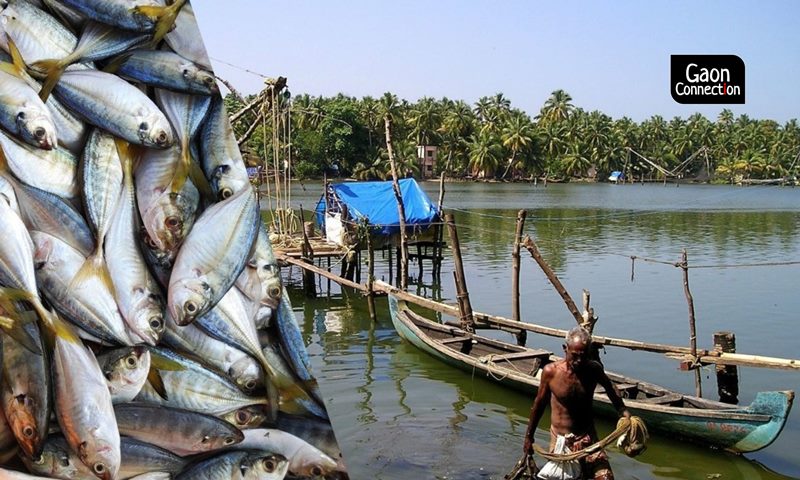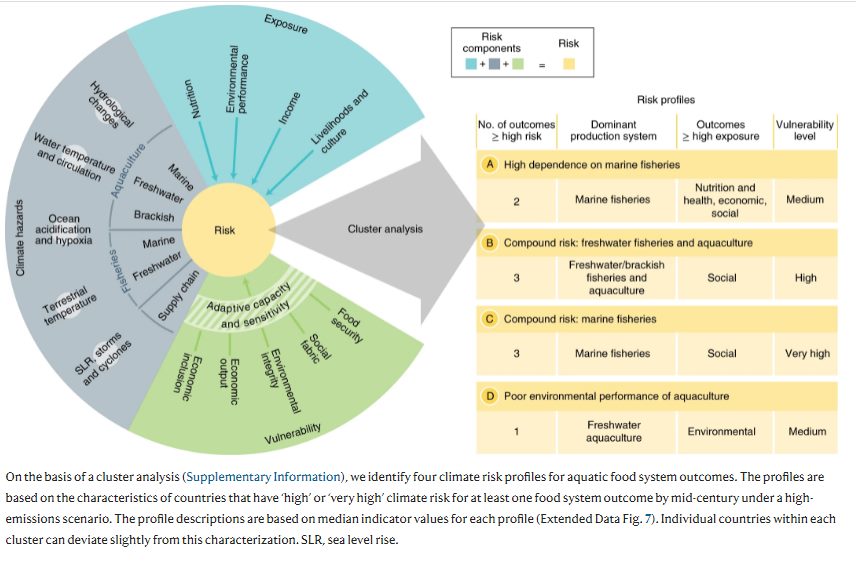Explained: Impact of climate change on countries that depend on fish for food and economy
A new study has found that climate change poses dual risks of food insecurity as well as economic deprivation for countries that depend on aquatic ecosystems for a major part of their diets. Details here.


In a high-emissions scenario by 2050, the paper found more than 50 countries face the triple threat of high climate hazards, exposure and vulnerability.
The authors of a study which was conducted to explore the impact of climate change on aquatic foods have warned that without mitigating the effects of climate change by reducing greenhouse gas emissions, societies that depend on aquatic foods will risk losing key contributions to livelihoods, economies, culture, health and nutrition.
The study was published in the online journal Nature Food and was titled ‘Compound climate risks threaten aquatic food system benefits’. It was published by Blue Food Assessment – a collaboration between Sweden-based Stockholm Resilience Centre, United States-based Stanford University and the non-profit organisation EAT.
“Without urgent action, capture fisheries – particularly in regions such as tropical Africa, Central America and the Indo-Pacific – face the most severe hazards. Aquaculture systems in off-shore and coastal waters, on the other hand, face lower climate-specific hazards, although freshwater aquaculture is exposed to high levels of hazard,” the study noted.
Michelle Tigchelaar, co-lead author and researcher at the Center for Ocean Solutions, Stanford University was quoted, “This is the first paper of its kind to assess the risks climate change poses to all aquatic foods, including freshwater and marine, aquaculture and wild-caught, which provide employment to more than 100 million people and sustenance for more than three billion people worldwide”.

Most vulnerable regions
The study mentioned that countries in Southeast Asia , the Indo-Pacific and Africa which are largely dependent on aquatic foods for sustaining livelihoods and economies, are facing the jeopardy of climate change adversely impacting a critical economic sector.
It is important to mention that these regions that are most vulnerable to the most serious effects on aquatic ecosystems due to climate change are also home to the most poor and underprivileged populations in the world.
Also Read: Addressing the climate crisis through deep seabed mining is one step forward and three steps back
In a high-emissions scenario by 2050, the paper found more than 50 countries face the triple threat of high climate hazards, exposure and vulnerability.

The study also stated that aquatic food systems contribute comparatively more to food system outcomes in developing countries, including Small Island Developing States (SIDS), with generally higher consumption of marine and freshwater foods, higher dependence on production, trade and value chain revenue; and higher numbers of aquatic food-dependent livelihoods.
“Combined with the concentration of climate hazards in the tropics and subtropics, this greater dependence leads to a double jeopardy in exposure to climate hazards for nutrition and health, economic and social outcomes,” it added.
Also Read: Africa’s Madagascar on the brink of world’s first climate change-induced famine: UN
The study also noted that the impact of rising global temperatures in terms of nutrition may equate to reductions in aquatic food access, limiting iron, zinc, vitamin B12 and omega-3 fatty acids in populations that are already at thresholds for deficiency, especially if climate change drives up food prices for households least likely to afford fish.

Mitigating climate change impact on aquatic ecosystems
While noting that a high-emissions scenario by 2050, the paper found more than 50 countries face the triple threat of high climate hazards, exposure and vulnerability. In order to mitigate the destructive consequences of the climate change, the study stated:
* Early warning systems, disaster response plans, insurance schemes and safety nets will all be key in building resilience to these growing threats.
* Mitigation of carbon emissions and adaptation to unavoidable impacts are both urgently needed. We need to focus on the broader social-ecological context of each country to ensure that climate solutions can build resilience and promote sustainable development.
* In addition to recommending measures that enhance the climate resilience of aquatic food systems, the paper also highlights the need for transformative action to reduce climate vulnerability overall, including promoting gender equity, reducing poverty, and strengthening governance systems.
Also Read: Known predominantly for droughts, why are districts in south Bihar facing floods?

